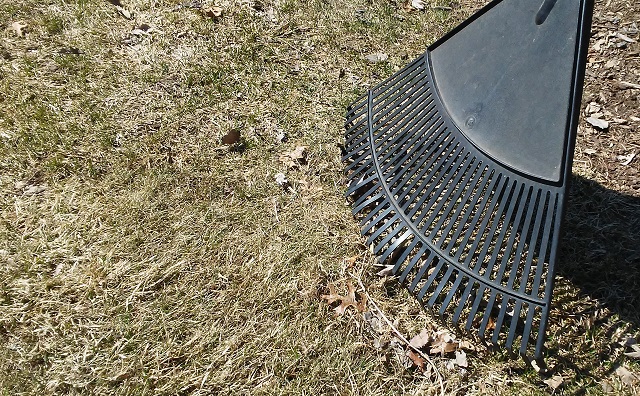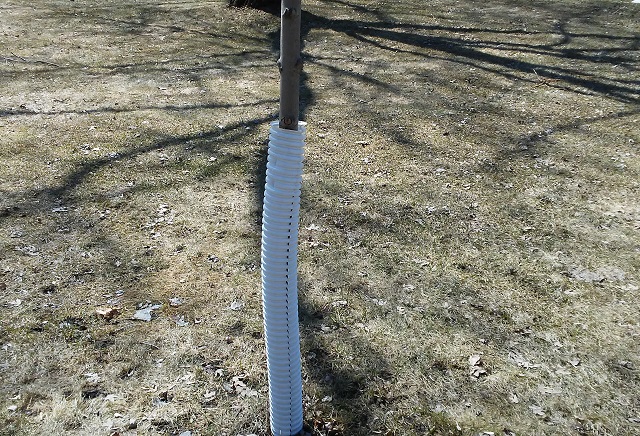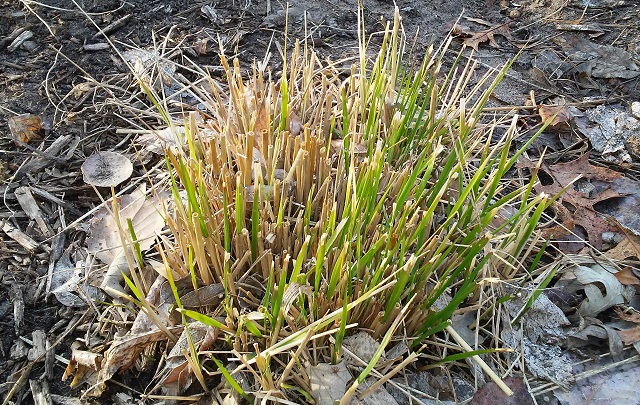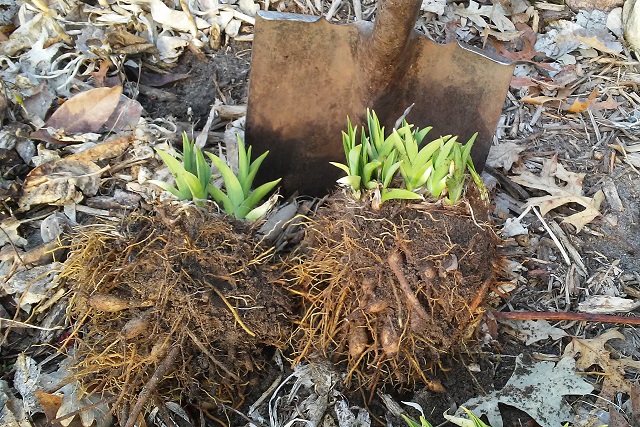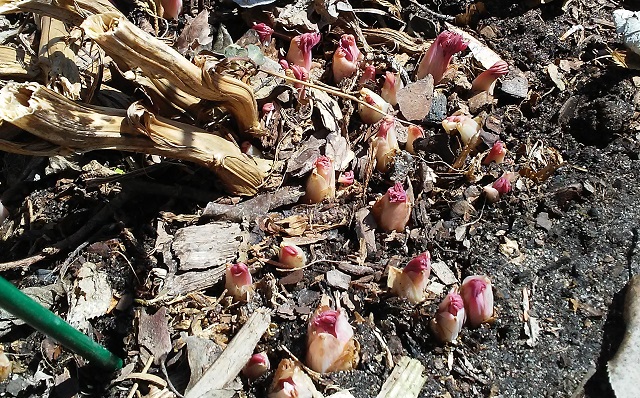Yay! The snow is gone and we can get outside in the garden. As long as your lawn and garden beds have dried out you can get out and start doing. If the soil is still wet or squishy it is best to wait a bit to avoid compacting the soil and possibly damaging tender plant roots. Here’s the list…
Rake Your Lawn
The long winter and snow has really left a lot of lawns looking horrible this spring. Not quite what you wanted to see when the snow finally melted right? One thing you can do to revive your lawn and get rid of snow mold is to rake. I like to use a plastic leaf rake because it seems a bit more gentle on the grass. You want wait until your lawn has dried out before raking because doing it too soon can tear up the grass plants and cause more harm than good. Rake any leaves, dead grass and other debris off the grass. Raking lifts the matted grass blades allowing light to get down to the soil for a faster green up too. Once you are done raking think about applying a spring preemergent fertilizer like Bonide’s Phase 1 Crabgrass Preventer to feed your lawn and stop many weed seeds before they even get growing. If you have bare or grassy tunnels in your lawn you may have vole damage and will need to reseed in spots.
Remove Winter Tree & Shrub Protection
Corrugated tree guards, burlap screens and hardware cloth do a great job protecting our plants during the winter months but should be removed for the growing season in most cases. Tree guards can be left off until early fall if you have deer that may rub on younger trees. Unless you have problems with rabbits the hardware cloth surrounds are no longer needed. Soon the bunnies will move onto your flowering bulbs or annuals anyway and leave the woody shrubs alone.
Cut Back Perennials
Many people enjoy leaving perennials up all winter long for something to feed the birds, have something to look or provide shelter for pollinators. Perennials can now be cut back and it is especially important for grasses where it is best to remove the old growth before the new leaves get too long.
Divide Perennials
Most perennials can be divided in the spring and will do better for it especially if they have been around for a number of years. When new growth emerges in the spring the plants are more manageable and you are less like to do damage to the small leaves. Dig up the clump with a shovel then use the blade or a garden knife to divide the clump into to several sections. Be sure to get several shoots in each division along with a section of roots too. Replant in the same space, relocate, add to new spot or share with friends and neighbors.
Enjoy!
This one is easy! I love walking around the garden in spring looking for all the things starting to poke out of the soil. It seems my bleeding heart was already two inches tall when the snow melted! The allium, rhubarb and sedum are all coming to life too Our yards will be lush and green in no time!



